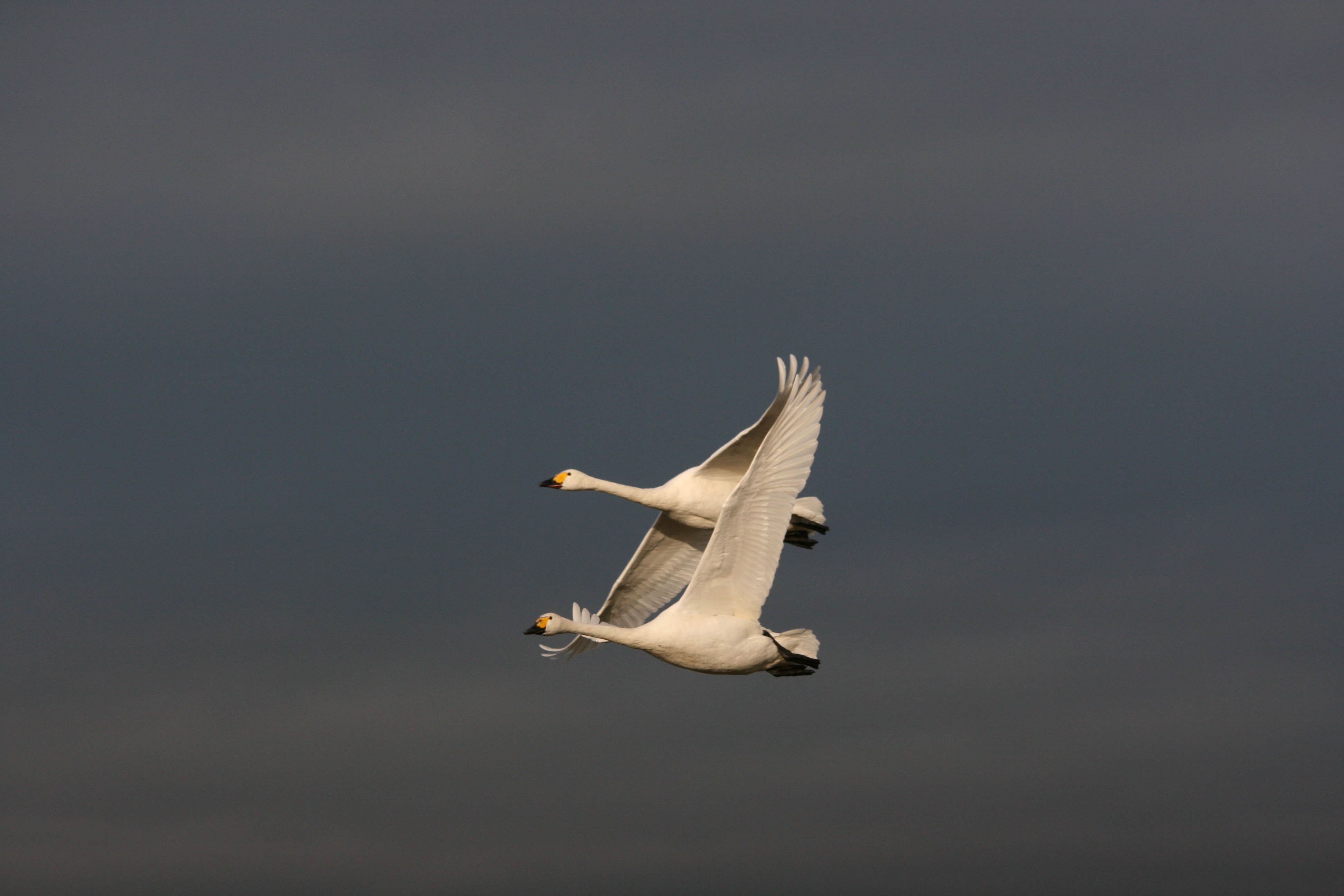
An intrepid conservationist is so concerned about the drastic drop in the population of a species of swan, she’s preparing to follow them as they migrate from the Russian Arctic to England, travelling through the air for 4,500 miles and crossing some of the most extreme terrain on the planet while, hanging from a flimsy piece of fabric powered by a small motor.
Numbers of Bewick’s swans—a great white bird, similar to the more widely known mute and whooper swan, but slightly smaller and with blacker bills—have halved in the last 20 years. The precise reasons for this decline are unknown, but Sacha Dench is determined to discover the answer. So determined, that she’s willing to risk potential harm and certain discomfort by flying a paramotor while trailing the birds during their late-Autumn migration, from summer feeding grounds in Russia to their over-winter wetland abodes in the UK.
Sacha works for the Wildfowl & Wetlands Trust (WWT), but she is no stranger to adventure, having represented both Britain and Australia in freediving events, descending for up to six minutes on a single breath. Her upcoming mission will be record-breaking rather than lung-busting, as she shadows the swans through the airspace of 11 countries in 10 weeks, buzzing over some ultra-remote regions, some populated by more polar bears than people.

Hazards include bears, big buildings, equipment failure and—most serious—extreme weather, including excruciatingly cold conditions. Beholden to the swans’ agenda and itinerary, Sacha knows there will be 3am starts (headwinds are less savage around dawn) and many hours spent shivering in the utterly unprotected harness of the paramotor in temperatures of -9°C.
The WWT has a particular connection to Bewick’s, having studied them for more than 50 years—the organisation’s logo features a pair of the swans in flight. It also has form in the field of adventurous expeditions, a heritage Sacha is looking forward to honouring and upholding.
‘As we develop the expedition, we’re exploring new research opportunities, from doing an aerial survey of the swans’ breeding grounds to documenting the turbulence from a wind turbine’ she says. ‘I hope this endeavour will live up to WWT’s rich history of scientific expeditions that stretches back to Peter Scott exploring Iceland and, ultimately, to his father’s expedition to the South Pole.’
Besides giving the WWT a unique opportunity to study the Bewick’s swans from a bird’s eye perspective, the project is intending to engage local communities in efforts to conserve the species and wetlands they inhabit, with a long-term view of stemming the swans’ decline.
Hunting is believed to be one of the main causes behind the drop in numbers, with a quarter of Bewick’s having gunshot in them when they’re x-rayed at Slimbridge. However, the drop has been so steep that other elements must be playing a role, and Sacha hopes her mission will reveal what those are.
Sacha will be accompanied by Russian national Alexander Bogdanov and another, as-yet-unknown pilot. Could it be you? The team are considering a crowd-funding option, through which a place on the trip might become available for a fee.
They’re also looking for local videographers and photographers in countries they’ll pass through en route—including Russia Finland, Germany, Poland and the Netherlands—to help gather background footage of the wetlands swans visit during their spring migration. The biggest challenge, however, is up-front funding.
The mission will begin at Nar’Yan Mar in the Arctic tundra, travelling west until the swans (and pilots) reach England, do a flyby of London along the Thames, and land at Slimbridge—which will be sometime in November. Follow their progress here.
